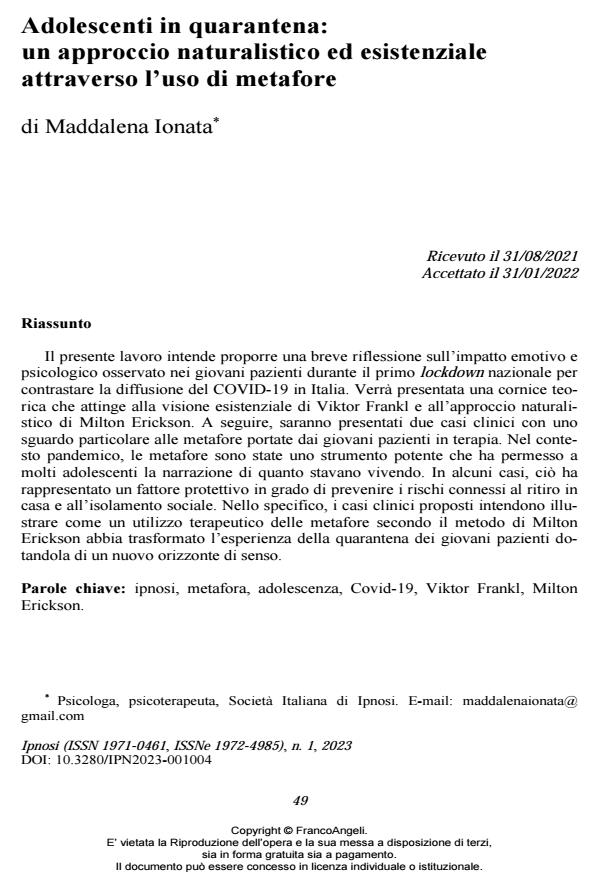Quarantined adolescents: a naturalistic and existential approach through the use of metaphors
Journal title IPNOSI
Author/s Maddalena Ionata
Publishing Year 2023 Issue 2023/1
Language Italian Pages 12 P. 49-60 File size 228 KB
DOI 10.3280/IPN2023-001004
DOI is like a bar code for intellectual property: to have more infomation
click here
Below, you can see the article first page
If you want to buy this article in PDF format, you can do it, following the instructions to buy download credits

FrancoAngeli is member of Publishers International Linking Association, Inc (PILA), a not-for-profit association which run the CrossRef service enabling links to and from online scholarly content.
This work is intended to offer a brief reflection on the emotional and psycho-logical impact observed in young patients during the first national lockdown to counter the spread of COVID-19 in Italy. A theoretical framework will be present-ed that draws on Viktor Frankl’s existential vision and Milton Erickson’s natural-istic approach. Following, two clinical cases will be presented with a particular look at the metaphors brought by young patients in therapy. In the pandemic context, metaphors have been a powerful tool that has allowed many teenagers to narrate what they were experiencing. In some cases, this represented a protective factor that prevented the risks associated with home confinement and social isolation. Specifically, the clinical cases are intended to illustrate how a therapeutic use of metaphors according to Milton Erickson’s method has transformed the quarantine experience of young patients into a new horizon of meaning.
Keywords: hypnosis, metaphor, adolescence, Covid-19, Viktor Frankl, Milton Erickson.
Maddalena Ionata, Adolescenti in quarantena: un approccio naturalistico ed esistenziale attraverso l’uso di metafore in "IPNOSI" 1/2023, pp 49-60, DOI: 10.3280/IPN2023-001004